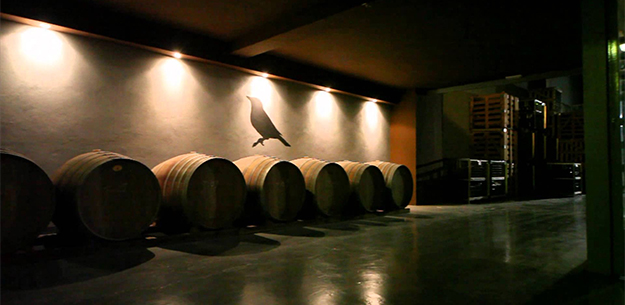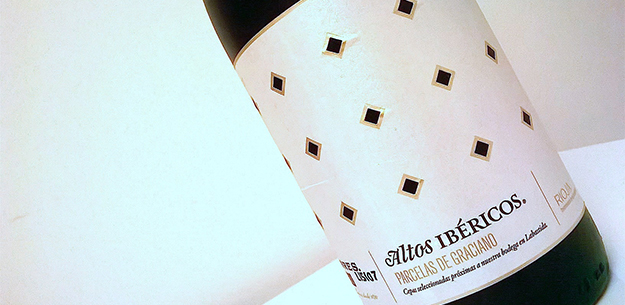.png.transform/rendition-xs/image_image%20(1).png)
Calling all Wine Lovers: Graciano Grape Is Worth a Second Look
This classic grape has gone from being considered a perfect grape variety for rounding out blends made primarily from other grapes like Tempranillo, to winning the respect of critics and wine drinkers alike. The revolution is here and its name is Graciano, the star of a curious turn of events that brings us back to a starting point that should never have been forsaken: varieties of native and minority grapes have a voice of their own.
Text: Rodrigo García Fernández/@ICEX.

Character, structure and notes of menthol. These are just some of the characteristics of Graciano, a native variety of La Rioja that is typically used for blending with Tempranillo in wines destined for aging. Although this is the most traditional incantation of this grape, let's dare to delve even deeper into the universe of Spanish single-variety Graciano wines.
Eager to forge new paths and create new wine experiences, enologists have committed whole heartedly to this grape variety, giving it the exclusive, starring role in their wines, and demonstrating that it boa sts inherent characteristics that are sure to fascinate all wine lovers.
When speaking about single-variety Graciano wines, the tendency is to focus on wines from Rioja. Though I will of course talk about that area in this article, before I do, I want to make a stop in neighboring Navarre, an important Spanish wine region where Graciano has strong roots in a tradition that was on the verge of disappearing.
Graciano in Viña Zorzal

One of the wineries that has made the firmest commitment to recovering native grape varieties in Navarre is Viña Zorzal. The Sanz brothers (Iñaki, Xavier and Mikel) have managed to make wines that are firmly linked to their native land, and one of them is a single-variety Graciano. The winery’s Export Director, Xavier Sanz, explains the origins of this project: “Our father, Antonio Sanz, liked Graciano because it added an added dose of freshness to his Tempranillo crianzas (bottle and barrel-aged wines). Since 2007, we have been committed to producing a single-variety Graciano due to the incredibly fresh and personal wines that it yields. In the past, Graciano was a grape that had a hard time ripening. Nowadays, however, thanks to good work in the vineyards and warmer climate conditions due to global warming, Graciano ripens much better and can be made into extremely elegant single-variety wines.”

Xavier perfectly defines the characteristics of this grape: “A small grape with a deeply-hued skin (which is why wines with ‘medium’ extraction are already deeply colored), low yield, late budding and ripening, good acidity and tannin levels. In our case, it is always the last grape to be harvested, and in our area, which is pretty warm and dry, the greatest differentiating factor is that it produces very fresh and less alcoholic wines than those from other local grape varieties.”
Viña Zorzal’s commercial strategy focuses on exports as one of its main pillars. What has been the reaction of international customers to this 100% Graciano wine from Viña Zorzal? “Without a doubt, our Viña Zorzal Graciano and Viña Zorzal Cuatro del Cuatro (from select Graciano grapes) wines are the soul of Viña Zorzal, and in my opinion there are two reasons for this: they are fresh and easy to drink, and there’s a segment of the market that is demanding this style of wines, with good acidity and freshness, (that are) very gastronomic. On the other hand, these wines differentiate us in some way from the competition: there aren’t a lot of Graciano wines out there, and even fewer that are 100%. A lot of customers are already looking for something different, made from minority grape varieties, and this is why a variety like Graciano sparks a lot of interest.”
Graciano power in Rioja

Rioja is much more than just Tempranillo. This prestigious wine region is considered the origin of other varieties like Graciano. It requires clay-limestone soils and a climate that is both temperate and cool at the same time. Graciano is fairly resistant to diseases like mildew and oidium; the yield of the vines is low, and the grapes ripen late. The wines here have significant acidity and polyphenolic content, making them ideal for aging. The aromas are very marked, and pleasantly intense.

In Rioja country, there are some interesting examples of single-variety Graciano, such as that of Bodegas Ilurce, located in the Rioja Baja, which, thanks to its particular climatic conditions, is perfect for cultivating Graciano. Its aromas are typical of this grape and include floral notes that are reminiscent of violets, as well as black pepper. It is extremely complex on the palate, with wonderfully integrated, woody undertones and notes of vanilla, nuts and spices.
Another example from Rioja comes from one of the large Spanish wine groups, Bodegas Torres. The Graciano grapes used to make the winery’s singular Torres Altos Ibéricos Parcelas de Graciano hail from its vineyards in Labastida (La Rioja Alavesa). This is a perfect example of how careful tending of the vines and the wine making process can yield a wine characterized by its clean aromas (black current, blackberry, black cherry, clove, and cacao) and dense and velvety palate.
Translation: Adrienne Smith/@ICEX

